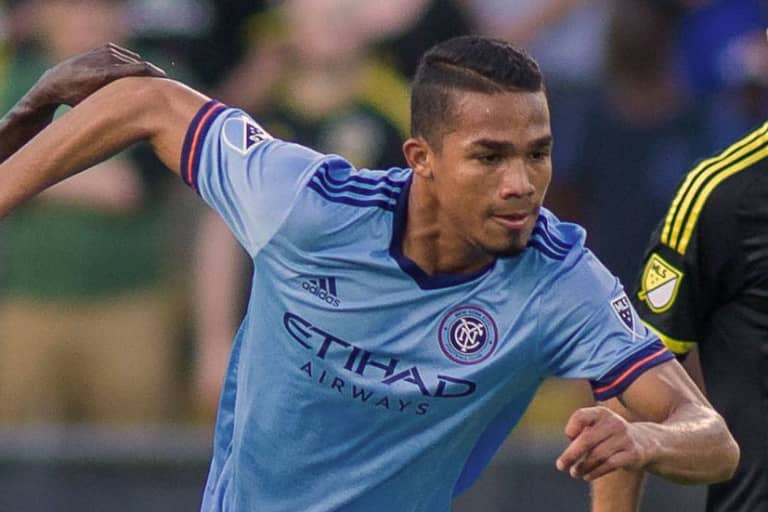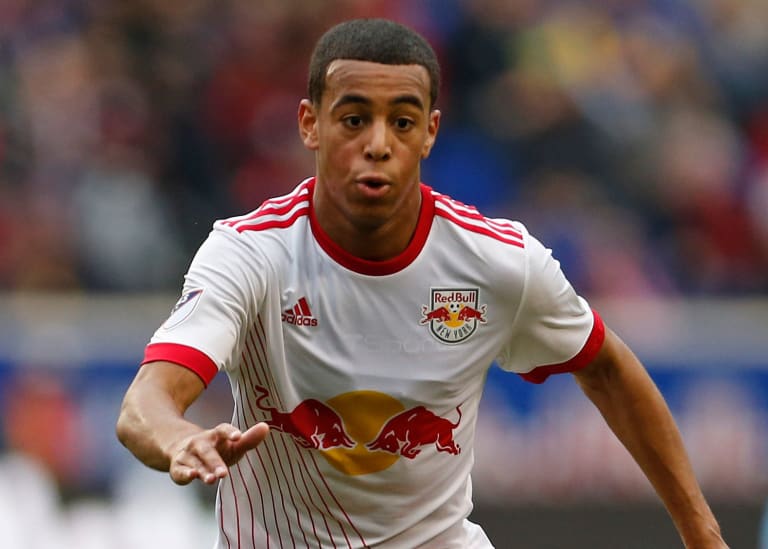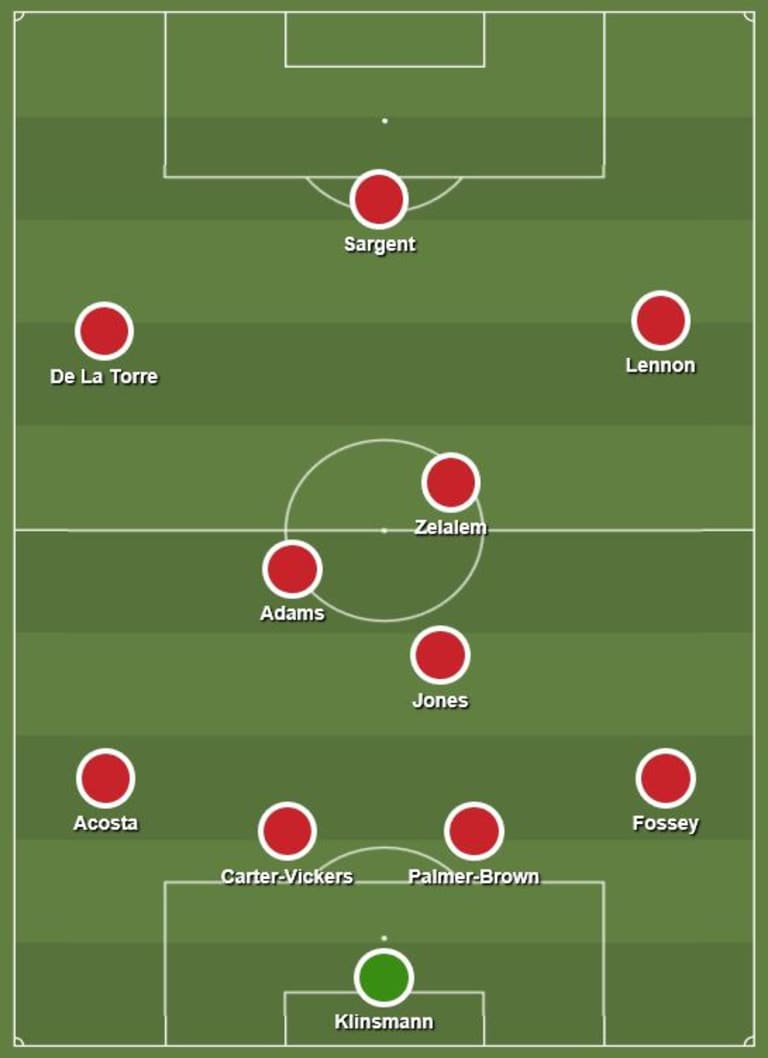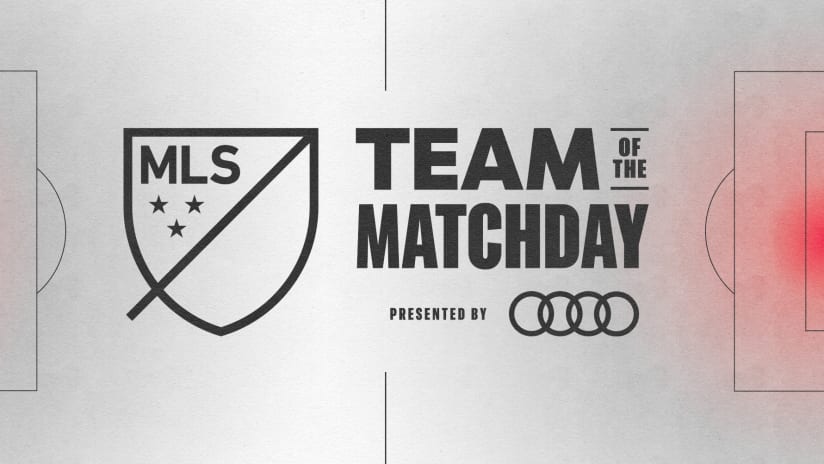The biggest youth soccer tournament in the world is nearly here.
Whatever the reputation of other youth tournaments, the reality is the FIFA Under-20 World Cup remains the standard for major youth tourneys the world over. It’s the uppermost rung on the youth-only FIFA tournament ladder, and considering the Olympics is open to overage players, it still retains its sheen of pure development. It’s also an enormously important scouting device for dozens of players from under-scouted countries.
And for the first time, the US U-20 team is going as continental champs.
The tournament officially kicks off in South Korea on May 20 with a match between Venezuela and Germany, and the US opens with Ecuador two days later. Fresh off a brisk run to the quarterfinals in 2015, Under-20 coach Tab Ramos and his charges have even loftier ambitions this time around. The question is whether they can reach them.
Here’s a deeper look into what to expect in South Korea over the next few weeks.
MLS players at the Under-20 World Cup
Across the breadth of the tournament’s 24 teams, 16 players are either signed by MLS sides or are currently Homegrown eligible. Unsurprisingly, almost all of those are ensconced on the American roster, 13 to be precise. Within that subset, eight are currently on Homegrown contracts, the largest percentage of any American Under-20 World Cup team in history.
Here’s the full list of MLS-connected players on Ramos’ 21-player World Cup roster.
Goalkeepers: J.T. Marcinkowski (Georgetown University/San Jose Earthquakes)
Defenders: Danny Acosta (RSL), Aaron Herrera (University of New Mexico/RSL), Justen Glad (RSL), Erik Palmer-Brown (SKC), Tommy Redding (Orlando City), Auston Trusty (Philadelphia Union)
Midfielders: Eryk Williamson (University of Maryland/D.C. United), Tyler Adams (New York Red Bulls), Derrick Jones (Philadelphia Union)
Forwards:Jeremy Ebobisse (Portland Timbers), Brooks Lennon (Liverpool/RSL), Lagos Kunga (Atlanta United), Sebastian Saucedo (RSL)
But that’s not all. Two MLS-connected outliers currently on loan aren’t currently with the US in South Korea. And both could have outsized roles to play.
Yangel Herrera, NYCFC (Venezuela)

Herrera’s contract is currently owned by Manchester City, but the talented Venezuelan holding midfielder secured a loan to NYCFC before the 2017 season. The timing of the tournament was somewhat awkward for Herrera, considering he was just rounding into form with the NYCFC first team as he left for Venezuelan U-20 camp. That’s obviously good news for Venezuela, which welcomes a rampaging central midfielder who displaced the mighty Andrea Pirlo in a starting lineup earlier this season. Herrera is all-action, and the fact that he was given Venezuela’s No. 8 jersey for the U-20 World Cup is an adequate reflection of his likely role in South Korea.
Douglas Martinez, New York Red Bulls II (Honduras)
Like Herrera, Martinez was secured on loan earlier this year by the Red Bulls' USL team after an impressive trial late last year. Martinez’s loan from Honduran club C.D.S. Vida was just announced on April 26, but he made quite the impression in his first match. On May 6, he entered for his debut against the Harrisburg City Islanders with 15 minutes left and scored his first USL goal shortly thereafter. Martinez was a regular starter in qualifying and scored the ultimate match-winner in a 4-1 victory against Antigua and Barbuda. Expect to see him start the tournament as one of Honduras’s primary scoring threats.
3 US names to know
Erik Palmer-Brown, Sporting KC
When Palmer-Brown was announced as a midfielder for the CONCACAF qualifying tournament, you could almost see the eyebrows raise in chorus across the country. Palmer-Brown played there sparingly this cycle, but most allow he’s best at his natural position at center back. Ramos admitted as much in his pre-tournament press conference, and he also said he plans to move Palmer-Brown back to center back for South Korea. But the SKC man, who’s still trying to break in with the first team, proved his mettle at the No. 6 in qualifying, and his distribution obviously benefitted by tourney’s end. Palmer-Brown, who wore the captain’s band in qualifying, remains the team’s important emotional anchor.
Tyler Adams, New York Red Bulls

You could be excused for failing to realize Adams is one of the three youngest players on this roster. He certainly doesn’t play like it. Adams was arguably the US’s most critical player in qualifying, covering scads of ground and relentlessly pursuing possession like a computer-guided missile. Adams fits Ramos’ frenetic high press system better than perhaps any midfielder on the roster, and Ramos spoke almost lovingly of Adams’ progression during this cycle in his pre-tournament press conference. Adams has gradually morphed from a sitting No. 6 under Ramos into more of a box-to-box midfielder, and his constant pressing makes the US a continual threat on quick-hitter attacks. He’ll be an American keystone on both ends of the field in South Korea.
Josh Sargent
If there was any rippling shockwave when Ramos dropped his 21-man World Cup roster, Sargent’s name was at the head of the list. Just a week earlier, Sargent polished a nearly three-week adventure at the U-17 CONCACAF Championship, where he wore the captain’s armband and led the US with five goals in six games. Sargent, arguably the most talented forward in the USYNT system at the moment, was then fast-tracked to the U-20 World Cup just weeks later.
What will the XI look like?
Injuries make guessing at Ramos’ XI for Ecuador on May 22 decidedly more difficult. Justen Glad was a first choice center back in qualifying, but he picked up an injury at the tournament and hasn’t played since. Tottenham center back Cameron Carter-Vickers is also nursing an injury, and Ramos was unsure of whether he’d be 100 percent for the opener.
Even still, I think we can take a paw at Ramos’ preferred XI for the opener. At least this is what I’d go with.

The newsiest thing here is Sargent starting at the 9. I’m for it, even if Ramos probably won’t be. The US was poor in chance conversion in qualifying, and preferred No. 1 striker Jeremy Ebobisse didn’t score once despite a cavalcade of chances. Sargent, meanwhile, is bouncing off an incredible run of form in U-17 qualifying, and while going with one of the forwards who was here in qualifying is the safe option – Ebobisse or Emmanuel Sabbi most likely – Sargent is the best player of the three.
Elsewhere I think the roster more or less picks itself. Luca de la Torre has been playing on the left to good effect for his Fulham youth side, and Brooks Lennon earned his spot in qualifying. The logjam at center back is unfortunate, but Carter-Vickers has to start if healthy, and Palmer-Brown at the No. 6 against World Cup competition might not go so well. Putting the much more spatially assured Derrick Jones there is a considerably better option.
There isn’t a No. 10 here, but with Ramos’ preferred style that doesn’t much matter. Gedion Zelalem will almost certainly start and provide the possession metronome in the middle while Adams and Jones press for quick turnovers to lead attacking stabs.
What should the US expect?
This is not Ramos’ entire first choice roster. He was denied the opportunity to call in four European-based Americans, three of whom have been starting for Schalke’s winning Under-19 side. They’d almost assuredly be better across the board with their services, but this is still a quality side that should at the very least expect to get out of its group.
Ecuador is the obvious difficulty, and they’ll get that one out of the way off the bat. The Ecuadoreans hosted the South American qualifying tournament and pulled in second, a run that included a smashing 3-0 win over Argentina. Ecuador is clearly good, and most consider them the favorites for the group, but the fact that they hosted qualifying perhaps obscures just how good on a neutral field. The US should be easily competitive, if nothing else.
Saudi Arabia and Senegal are more of a mixed bag. Senegal has been good enough to reach successive AFCON U-20 finals and certainly good enough to beat the US on their day. In March, this Senegalese crew reached the AFCON final before falling to Zambia 2-0.
The Saudi Arabians certainly look like the weak link of the four, but they opened some eyes in qualifying by dropping South Korea, which played in the AFC tournament but didn’t need to qualify, 2-1 in the group phase. They came within a breath of winning the whole tournament after knockout wins over Iraq and Iran (the latter in a 6-5 barnburner), and ultimately lost to Japan in penalties in the finale. Which means all three opponents reached their federation’s qualifying final.
Each of these three matches provide some level of undercover difficulty for the Americans, but this is a winnable group all things considered. The base expectation, once again, should include progressing out of the group for just the second time in the last five U-20 World Cups. More loftily, the US has been to the quarterfinal phase in this tournament five times since 1989, and it’s never won two knockout matches in the same U-20 tournament in its history. Can this be the group to change that?













